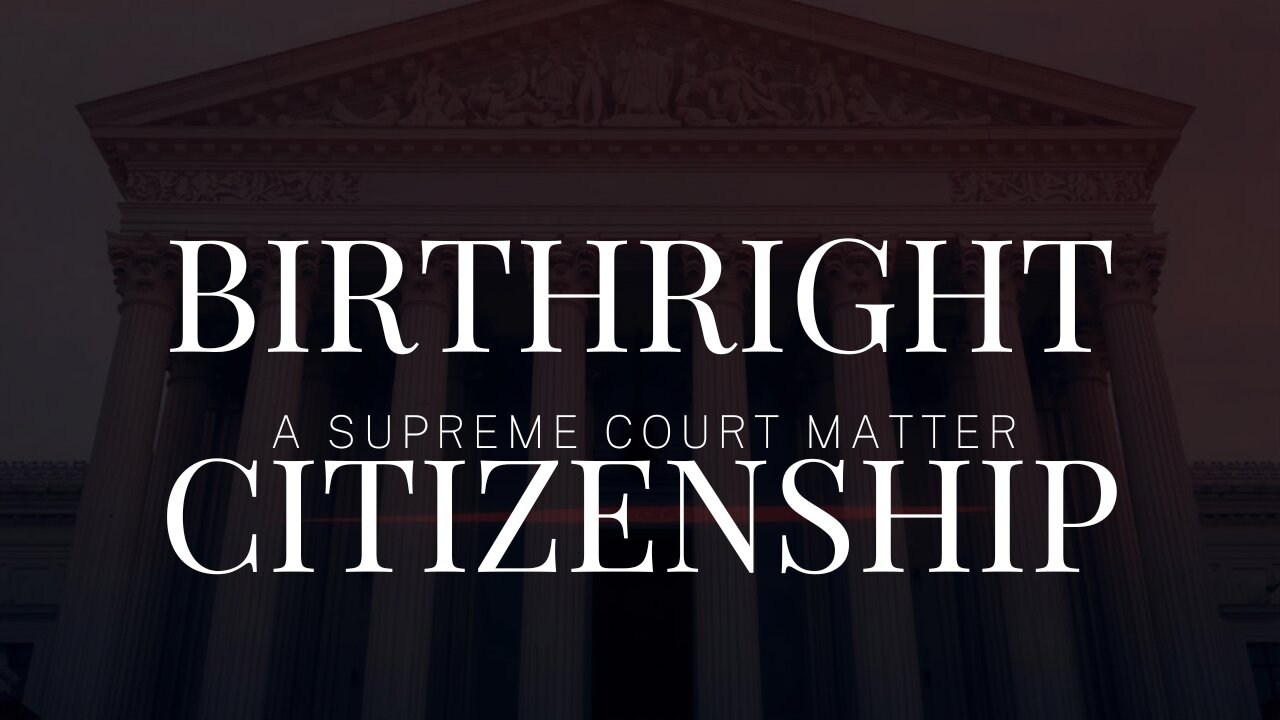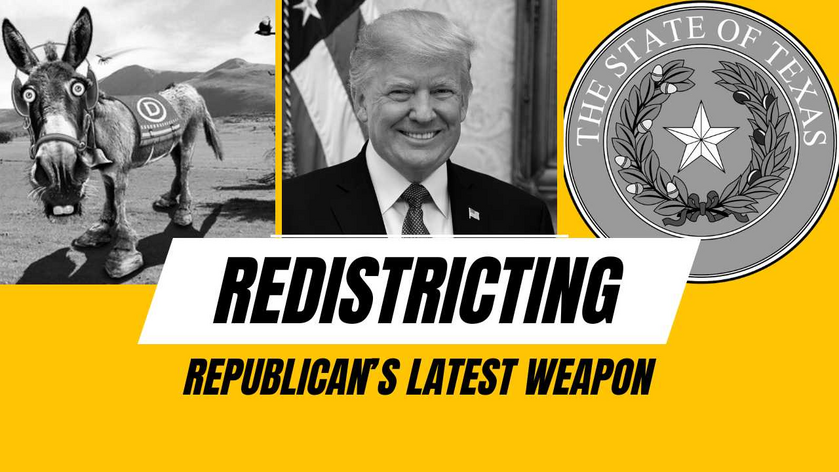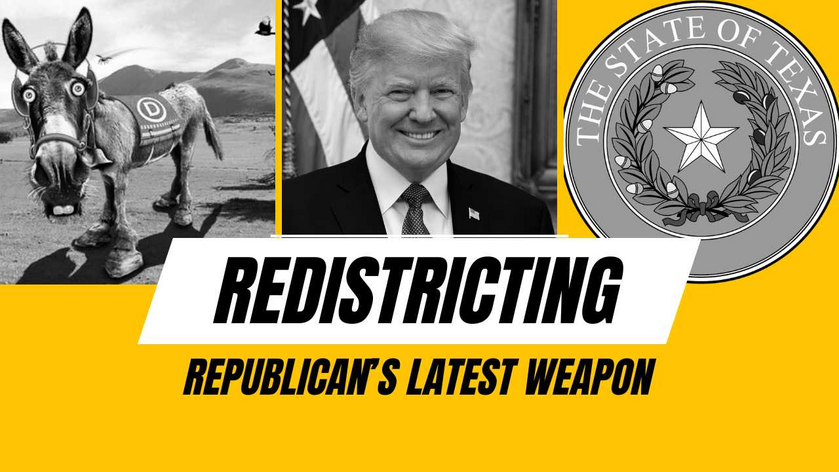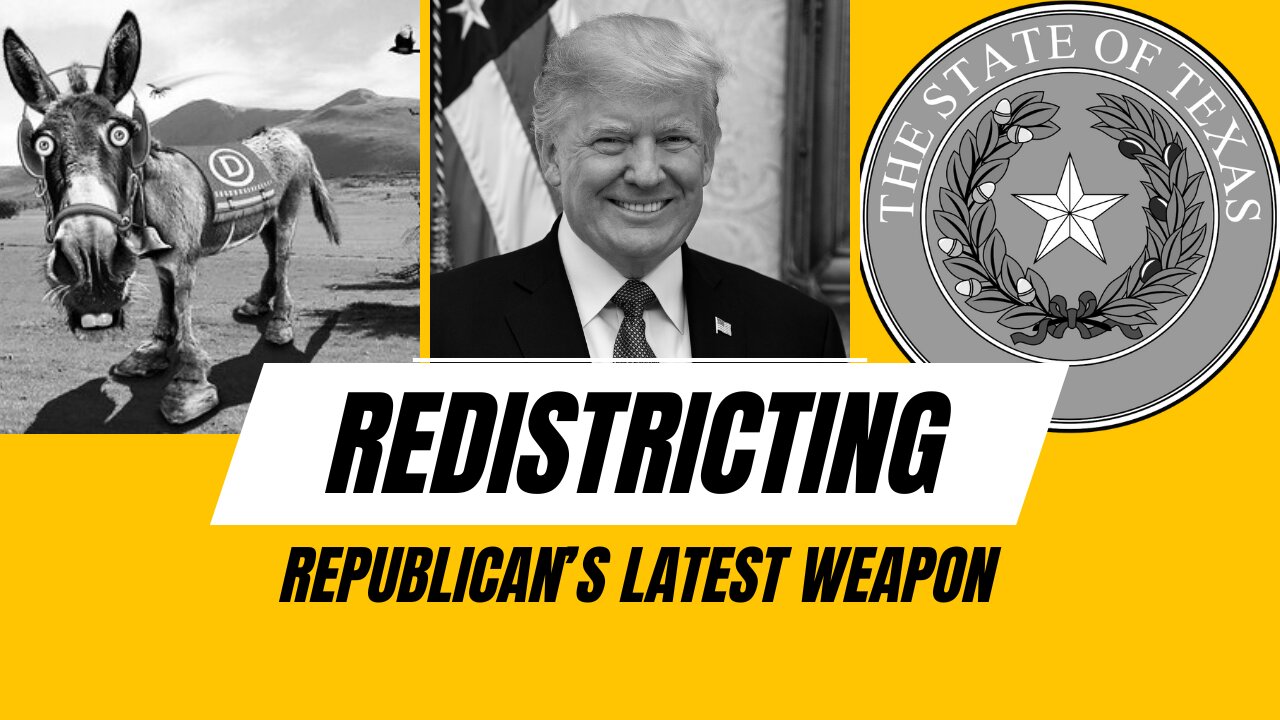The reelection of Donald J. Trump as the “Second Repeating President” has brought about a sea change in American politics. Nowhere is this more important, nor will its effects be longer lasting, than in the area of immigration. This policy area already has brought out the best and worst in certain mayors and State governors. It will also be critical to deciding whether the United States as we know it, will remain as constituted.
Why immigration is so critical
The Framers, when they wrote the Constitution, never imagined that immigration would be any more than an occasional, voluntary affair. Mass migrations, or attempts at same, had started the change in ancient Rome from Republic to Empire. It did so by forcing the repeated election of Gaius Marius, forerunner of Julius Caesar, as senior consul. Marius also introduced the concept government issue, or G.I., to Western military practice. But all this took place more than a millennium before the colonization, and independence, of what became the United States. So for much of American history, the only mass movements over land in North America were by uniformed, disciplined armies.
The first great immigration wave of the late nineteenth century provoked cultural shocks. This in turn prompted the first systematic vetting system for those wishing to take up residence in the United States. This, of course, consisted of the immigrant processing and temporary residence compound on Ellis Island. Moreover, the new Immigration and Naturalization Service established quotas, specific to every nation-state, to control entry on a collective scale.
But in 1965, Democrats passed the Immigration Act. Quotas, and the Ellis Island system, disappeared. This opened the floodgates – mainly from Mexico.
What about Mexico?
Until relatively recently, Mexico had been a Spanish viceroyalty, then a dictatorship, then a French puppet “empire.” Benito Juarez brought freedom from European independence but not lasting civilization. Chaos reigned – and Texas, having the longest border with Mexico, often took repulsion of Mexican bandits upon itself.
But all that was a distant memory. Mexico, in the mid-twentieth century, had drug cartels instead of the colorful bandits of its past. More to the point, Mexico has never integrated all its people into a functioning economy with opportunity for everyone. So relatively poor people have, for decades, sought entry into the United States. Many take time to apply legally, pass muster, and have settled here as naturalized citizens. Their descendants even qualify as natural born citizens, welcome to run for President someday. But many others have simply slipped across the border, with varying degrees of brazen-ness.
And ever since the Motor Voter Act of 1993, they have been able to register to vote. The law says they mayn’t, but they do it anyway, with the connivance of the Democratic Party. That Party carved out a special “victim identity” just for persons of Hispanic origin. And, also for decades, that has worked. Until very recently, a Hispanic neighborhood, especially with Mexicans in it, was a Democratic neighborhood.
The country of Mexico encouraged this movement, which served two purposes. First, Mexico had that many fewer mouths to feed. Second, these illegal aliens send remittances back to Mexico. Without those, Mexico collapses, pure and simple.
Donald Trump makes the first change
Then in 2016, Donald Trump ran for President. Though he campaigned as a Republican, he wasn’t – not as far as the Republican establishment was concerned. The Republican Party began as the anti-slavery Party. But beginning with Reconstruction, the Republican Party was the Party of big business, grasping for immediate profit. Sometimes that grasping made it convenient for them to support opportunities for the lower classes. But by 2016 the Republican Party might stand for a secure border and proper vetting of new entrants. It actually worked toward a more cynical end: cheap, exploitable labor. Illegal immigrants are eminently exploitable, so establishment Republicans always whispered,
(Wink, nudge) Come on in; we’ve got jobs for you.
Donald Trump changed all that. When he called for a secure border, he meant it. He build seven hundred miles of border wall along the Northern Rio Grande Valley. And – largely by executive order – he secured the border as no President had done in recent memory.
Nevertheless, many illegal aliens remained – and they still voted. Hillary Clinton’s popular vote “margin” in 2016 consisted entirely of illegal votes of one kind or another. Most of these, in fact, were in California, the most welcoming of illegal immigrants for political purposes.
So in 2020, the Republican establishment worked with the Democrats to oust Trump, and succeeded. And on his first day, new President Joe Biden rescinded every order Trump had given. He even ordered contractors building the border wall to down tools, go home, and leave everything as it was.
Illegal immigration surges – and the problems return
That was a mistake. Or perhaps the mistake lay in imagining that they actually had the support of the American people. In yelling and screaming that their opponents were “spreading misinformation” (i.e., lying), they came to believe their own lie. The false-flag pseudo-operation that was the January 6 Event allowed more of them to convince themselves of this lie.
With the result that, as wave upon wave of new immigrants came in, their apologists created a new narrative. “They are seeking asylum!” they cried – but of course people were “fleeing” from economic conditions, not an ethnic-cleansing dictatorship. The apologists said that during the first Trump administration, and now they said it again. Anyone who disputed that, they denounced as a bigot.
Then the crimes began to occur. The murder of Laken Riley was only one example. But the murder of Jocelyn Nungaray, 12, really opened the floodgate of criticism. It’s one thing to tell the survivors of an adult victim, “Your loved one gave her life for the revolution!” As loathsome as that message (express or implied) is, the latest implied message was now an order of magnitude worse. Now a child had given her body for the revolution – after first serving the depraved pleasure of her two murderers.
Worst possible timing
This also happened at the worst time for immigration apologists: in the final months of Donald Trump’s reelection campaign. Darrell L. Castle, from his studio in Memphis, Tennessee, ringingly indicted the Biden administration and his feckless SecHomeSec, Alejandro Mayorkas. “You left the zoo unlocked!” he cried – and listed Jocelyn Nungaray, Rachel Morin, and other victims to make his point.
Then the Republican National Convention took up in Milwaukee, Wisconsin. That convention began after a would-be assassin tried to abort the Trump campaign before it could officially begin. He failed – and the Conventioneers mentioned Jocelyn Nungaray, as Trump had done before his fateful encounter in Butler, Pa.
In August, one month after Joe Biden ignominiously quit the race, Rep. Mark Green (R-Tenn.) offered his own indictment of the Biden-Harris administration. He, too, named the victims’ names. Then-Rep. Matt Gaetz (R-Fla.) did the same, when writing of Attorney General Merrick Garland’s “pep rally” after the Trump-Harris Debate. When Bill Clinton stumped for Vice-President Kamala Harris, arguing that “low birth rates” mandate higher immigration, even he had to admit the connection between illegal immigration and the deaths of so many specific victims.
Then on October 16, Kamala Harris granted an interview to Fox News’ Bret Baier. The results were disastrous for her. She tried to blame Trump for the immigration crisis – but Baier, in rare form, was having none of it. But this one exchange is most relevant:
Kamala Harris refuses to take responsibility for the death of Jocelyn Nungaray as a video of her grieving mother is played in front of her face, continues to attack President Trump. Kamala caused Jocelyn's murder. This is DISGUSTING.
https://x.com/TrumpWarRoom/status/1846677224130298175
One week before the election, Mark Green repeated his criticism – with voluminous new evidence.
The election that changes everything
As the world knows by now, Donald Trump won that election. This caused much weeping – with which Darrell Castle did not sympathize – and even psychotic breakdowns. As part of this, several mayors and State governors recognized at once one big reason why Trump won reelection. So they lined up to announce their deliberate opposition to any “mass deportation” operation.
Gov. Gavin Newsom (D-Calif.) tried summoning his legislature into special session to pass obstructive legislation. That plan failed. But Gov. Maura Healey (D-Mass.) and Mayor Michelle Wu (D-Boston) announced their refusal to cooperate. (This same Michelle Wu didn’t want to prosecute thefts, and hosted an “electeds of color” holiday party excluding whites.) And in the most stunning display, Mayor Mike Johnson (D-Denver, Colo.) vowed to station his police at the city limits to interdict Immigration and Customs Enforcement (ICE) personnel attempting to enter, to arrest illegal immigrants and take them away for deportation. (In reply, Sen. Ted Cruz, R-Texas, suggested busing illegal migrants to Denver, to see how the city’s residents like it. Furthermore, ICE Director-nominee Tom Homan said the obvious.)
[T]he Denver mayor [and I] agree on one thing: He’s willing to go to jail, I’m willing to put him in jail.
Tom Homan
Gov. J. B. Pritzker (D-Ill.) seemed to say the same, though perhaps he was not serious. Los Angeles is now a sanctuary city, by unanimous motion of the City Council. And twenty-four Democratic State Attorneys General have pledged to challenge any “mass deportation” orders in court.
Texas leads the way on combating illegal immigration
Against these displays of defiance of the coming Second Trump Administration, stands a formidable alliance. Texas will lead that alliance, as it had “taken point” against illegal immigration since Biden’s original “down tools” order. As part of Operation Lone Star, Texas has erected physical barriers wherever this was physically possible. They include:
Texas’ own border wall, which the State is building with its own funds,
A riparian barrier, consisting of stringed buoys alternating with serrated disks, with netting beneath,
Concertina wire along the Northern Rio Grande Valley near Eagle Pass (the worst unlawful entry point), and
At least one permanent barracks for Texas National and State Guardsmen charged with border enforcement.
Three months before the election, the Fifth Circuit Court of Appeals said the riparian barrier could remain. And yesterday the Fifth Circuit ruled – again – that Texas was in the right to string the concertina wire. (See docket and injunction issued Wednesday, November 27.)
BREAKING: the federal court of appeals just ruled that Texas has the right to build the razor wire border wall that we have constructed to deny illegal entry into our state.and that Biden was wrong to cut our razor wire. We continue adding more razor wire border barrier.
Gov. Greg Abbott (R-Texas)
https://x.com/GregAbbott_TX/status/1861894806622085400
The appellate panel consisted of Judges Stuart Kyle Duncan, Don Willett, and Irma Carrillo Ramirez. Duncan and Willett are Trump appointees; Carrillo-Ramirez a Biden appointee. Predictably, they voted 2-1 to enjoin any tampering with the concertina wire. Duncan and Willett held that the federal government had waived sovereign immunity, and Texas would likely win on the merits. Carrillo-Ramirez disputed both conclusions.
Texas independence
The Supreme Court had vacated an injunction pending appeal, apparently after two migrants drowned in the Rio Grande. Subsequent evidentiary proceedings at District Court level said Texas was not at fault in those drownings. But at the time, Gov. Abbott declared open defiance – and the Texas Nationalist Movement called for secession.
The TNM urges Governor Greg Abbott and the legislature to call an immediate special session to explore Texas independence, so we may finally protect our border.
https://x.com/TexasNatMov/status/1749587318216986679
That special session didn’t happen. Many other things did, including the Trump assassination attempt, the Biden debate disaster, and the campaign. But two and a half weeks before the election, TNM head Dan Miller declared the election would make no difference. He reasoned that unelected bureaucrats held the real power – so all decisions to interfere with Texas, were theirs. But that was before Trump won, then designated Elon Muck and Vivek Ramaswamy as joint heads of a new Department of Government Efficiency. That Department would strike directly at some of those unelected bureaucrats that do, in fact, create legitimate grievances for Texas.
What else Texas will do
In fact, after Trump won reelection, Gov. Abbott and his Land Commissioner, Dawn Buckingham, announced offers of land to build deportation facilities on. Texas has been quietly buying up riverbank land to build its own border wall. Now they’ve offered 1400 acres of that land, in Starr County, for lease to the government. Tom Homan has already indicated the second Trump administration will accept. Then, two days ago (November 26), the Land Commissioner announced that further offers would be forthcoming. Commissioner Buckingham calls this expanded offer “The Jocelyn Initiative,” after Jocelyn Nungaray.
The Jocelyn Initiative in which we will locate appropriate land under my jurisdiction to lease for the construction of violent criminal deportation facilities. My office has identified several of our properties and is standing by ready to make this happen on day one of the Trump presidency.
Dawn Buckingham
https://x.com/CollinRugg/status/1861450149500711027
Jocelyn Nungaray’s family watches as the state of Texas installs a border wall panel for their daughter.
Collin Rugg
https://x.com/CollinRugg/status/1861459735137959992
If the Jocelyn Initiative succeeds, no one should send illegal migrants to Denver, or any other blue State or city. Let red State mayors and governors pick up the phone and call ICE to haul them away.
Separately, Trump recently threatened a 25 percent increase in tariffs on Mexican goods if the massive “migrant caravans” didn’t stop. Mexican President Claudia Sheinbaum Pardo at first threatened retaliation. Rep. Henry Cuellar (D-Texas), one of the last two Democratic Representatives on the Texas border, predicted that negotiations would follow. They have, and last night President Sheinbaum-Pardo agreed to stop the migrant flow at once.
Thus President Trump is taking effective action even before his re-inauguration. Once that happens, his Attorney General should move to discuss settlement or dismissal, as appropriate, of all current immigration cases. More broadly, this shows the extent of the sea change on immigration that Trump’s reelection has brought.
Link to:
The article:
https://cnav.news/2024/11/28/foundation/constitution/immigration-sea-change/
Video:

From the Harris-Baier interview:
https://x.com/TrumpWarRoom/status/1846677224130298175
Texas v. DHS, at Fifth Circuit:
Docket:
https://www.courtlistener.com/docket/68058529/state-of-texas-v-dhs/
Latest memorandum opinion and injunction:
https://storage.courtlistener.com/recap/gov.uscourts.ca5.216848/gov.uscourts.ca5.216848.181.0.pdf
Gov. Abbott on effect of the injunction:
https://x.com/GregAbbott_TX/status/1861894806622085400
Texas Nationalist Movement calls for secession:
https://x.com/TexasNatMov/status/1749587318216986679
The Jocelyn Initiative:
https://x.com/CollinRugg/status/1861450149500711027
https://x.com/CollinRugg/status/1861459735137959992
Declarations of Truth X feed:
Declarations of Truth Locals Community:
https://declarationsoftruth.locals.com/
Conservative News and Views:
Clixnet Media























